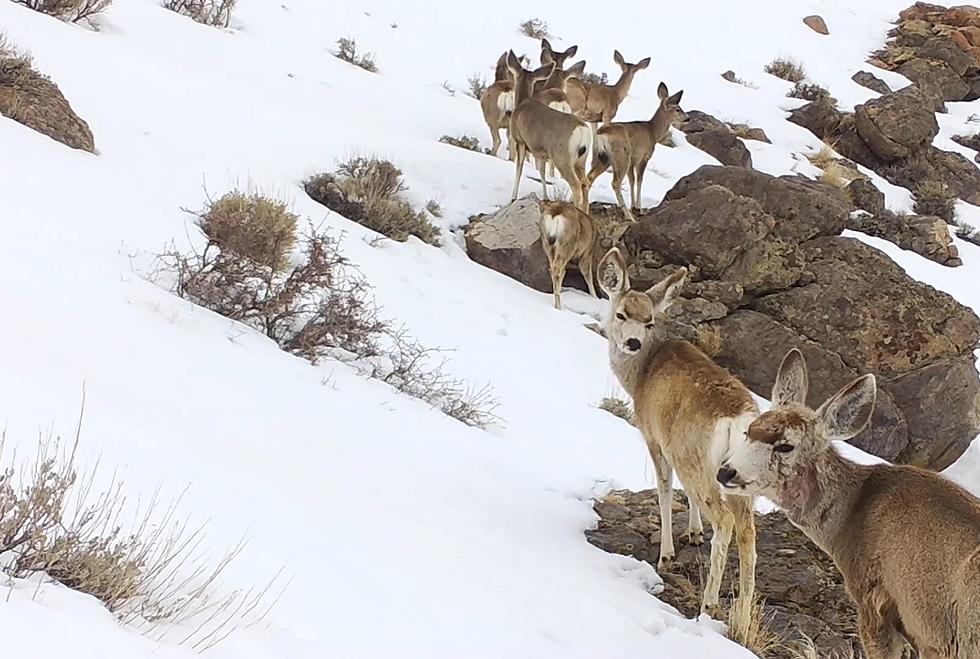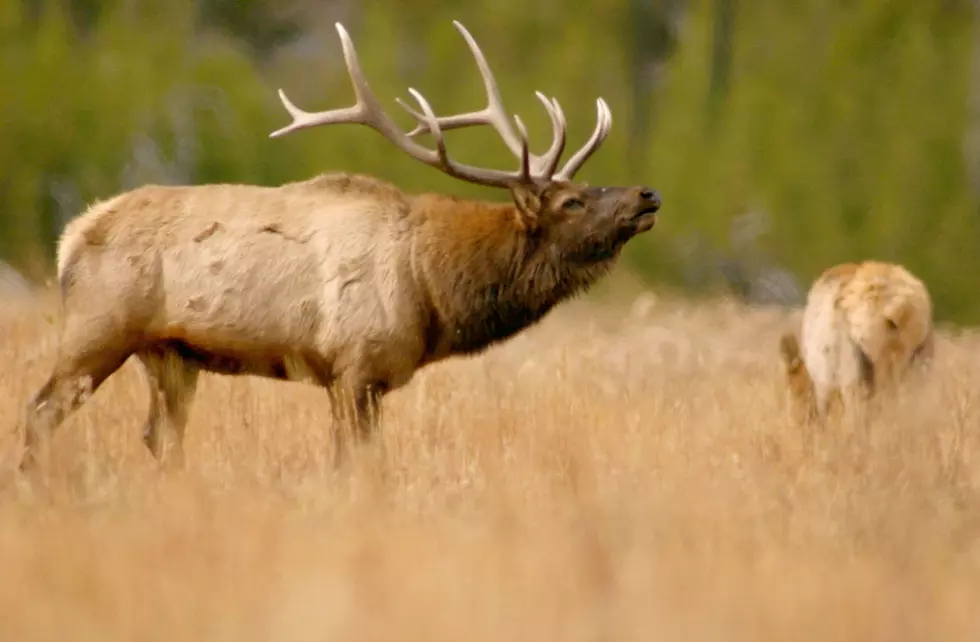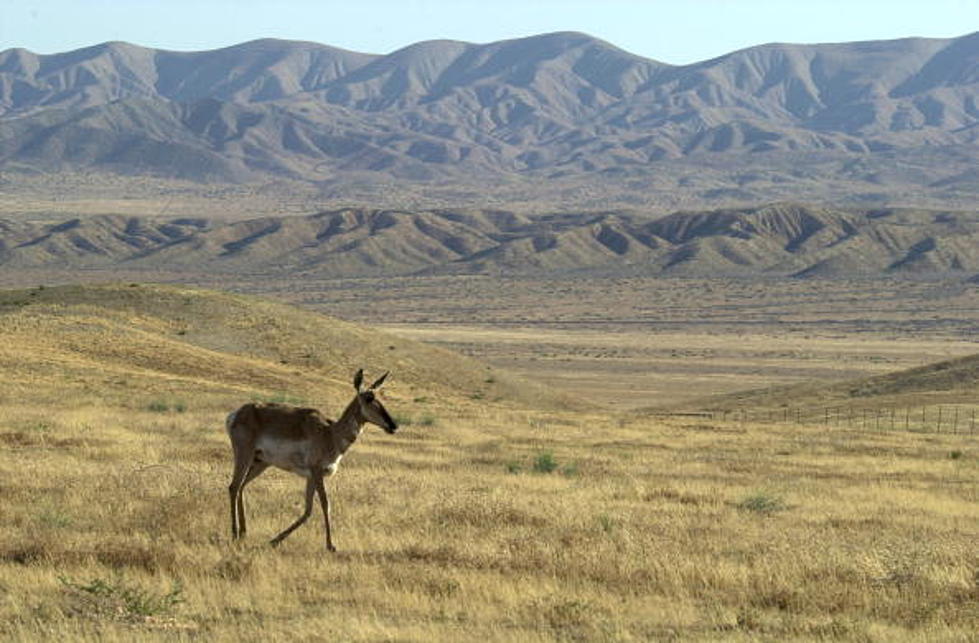
CWD Working Group Hopes to Find Solutions Before It’s Too Late
LARAMIE -- A public meeting to provide information and gather crucial public input on Chronic Wasting Disease (CWD), was held last week at the Wyoming Game and Fish office in Laramie.
The meeting opened with Game and Fish sharing foundational information about CWD before dividing into five break-out groups with the public to discuss ideas on the management plan.
LaramieLive met with Libby Lankford after the meeting. She is an appointed member of the CWD working group and said the meeting was well-attended by other working group members besides herself. The working group, formed in April, had four members in attendance. Brant Shumaker, a scientist from Laramie; Jim Logan of Shoshoni, a veterinarian for the state livestock board; Steve Martin of Rock Springs, sportsperson representing the Bow Hunters of Wyoming; and Lankford, representing the landowner/agricultural community. There were also about 15 people from the general public and another 15 from WY Game and Fish.
She said CWD in the Cowboy State is a serious issue, and it’s not improving.
“Game and Fish considers it a ‘wicked situation,’ because there is no cure yet. It’s only going to progress further. There are places in the state that have up to 60 percent prevalence in deer herds. We’re at about 10 percent around here,” Lankford said.
“CWD is predominantly here in the southeast corner of Wyoming. It’s starting to move up toward the Big Horn Basin, the Black Hills, and only a few confirmed cases in western Wyoming, but it’s mainly found from Hwy 30, 487 toward Casper, and east of that.”
The main focus of this first working group meeting was to get public input on how to manage CWD and to show attendees just how grave the situation has become. Lankford said so many animals show no outward signs of having the disease until they are almost dead.
“You can’t tell when the prions in their bodies are affected until they exhibit lethargy, lose weight, have droopy ears and don’t move around a lot,” she said.
CWD is a prion disease affecting cervids, the deer family, and belongs to a group of similar diseases such as BSE (mad cow disease) and scrapie in sheep, called transmissible spongiform encephalopathies (TSE). In the U.S., CWD affects mule deer, white-tailed deer, elk, moose, caribou, and reindeer. Natural infection causing CWD affects members of the deer family.
“If you see an animal that looks sick, always call Game and Fish,” Lankford said. “Give them the general area, or actual coordinates from your cell phone if possible. Then they can go out and take a look at the animal.”
She said right now, there is no mandatory testing requirement for hunters in Wyoming, but that was one of the main topics of discussion at the meeting.
“Testing is voluntary now. Hunters may take the head in for testing, or there are videos online showing how to remove lymph nodes. But every breakout group at the meeting had that listed as a recommendation. Other states do it, and I agree with it. We always submit our elk for testing, even if they don’t look sickly. And we hunt a herd that, up until last year, had no CWD in it,” Lankford said.
Lankford said the CWD working group will take into consideration solutions, whether successful or not, will be considered.
“In Illinois, for instance, officials had an agency cull a whole bunch of animals, but it was hidden from the public. When the public found out, many reacted negatively and demanded the process be stopped immediately. Despite the negative reaction, they thought they were making strides with the culling. The State of New York did the same thing. They caught it early, killed a bunch of deer, and they don’t have very much CWD,” said Lankford.
“The public really needs to be a part of this discussion. If it comes down to our plan including culling major groups of deer to at least help slow down the spread of the disease, we want the public to be behind us. They need to know what is going to happen, and that there is support for it. The purpose of these meetings is to create public support.”
The disease is extremely contagious, Lankford said. Animals can actually shed the prions into their environment, which spreads quickly with migration habits, etc.
“Through urine, feces, saliva, hair – wherever they travel, they will drop these prions, which then stay on plants, in the water, and the next group of animals picks them up. It’s a serious disease,” Lankford said.
She said genotyping is being done on animals where scientists are trying to see if there are some with more resistance to the disease. It has been found that some animals have the disease, but they live longer before showing symptoms of the disease.
“But that can also be a bad thing because they are shedding prions longer. It’s a double-edged sword. We have deer that get it and die quickly, and some that take much longer before they are affected by CWD. We hope we can figure out a solution, or a vaccine, from these animals. There is always ongoing research,” said Lankford.
Besides the genotyping, researchers are investigating why CWD is more prevalent in deer than in elk. And there is hardly any showing up in moose. But it’s rampant in whitetail and mule deer herds. They are also trying to figure out if the disease transfers from animal-to-animal, or environment-to-animal. Scientists look at locations where herds congregate, then see if there is a connection to animals that migrate through the area, and whether or not they acquire the disease from environmental factors.
Local public meetings will also be held in Casper, Sheridan, and Worland. The working group as a whole is scheduled to meet for the first time on July 23-25 in Lander.
Following the meetings, the Ruckelshaus Institute will compile the information gathered from across the state and present it to the 32 members of the newly-appointed Game and Fish CWD working group. The group will consider this information as well as other information developed from within the working group as they work to develop a revised CWD management plan.
“The scary thing is that there is no cure and no vaccine. The immune response in the animal’s body doesn’t recognize CWD as a disease. It’s too closely related to the animal’s normal condition. The deer’s body doesn’t react to it.”
Lankford stressed the importance of the public getting involved, whether you hunt or not.
“This is our problem, right now. This is affecting our children, our grandchildren, and our great-grandchildren right now. The people who attended the meeting in Laramie were of the older generation. It was heart-breaking to see that the young people who were there were the four of us and game wardens. I was disappointed in my generation. We all want to continue hunting, but if we don’t get involved now, the 30-somethings, then we aren’t going to have healthy animals to enjoy in our future.”
Visit the Game and Fish website at wgfd.wyo.gov for more information on CWD and to follow the CWD collaborative process. For those unable to attend in person, the meeting was recorded and is available to view on the Game and Fish website, as well as an opportunity to submit online comments for consideration in the revision of the CWD management plan.
More From KOWB 1290









